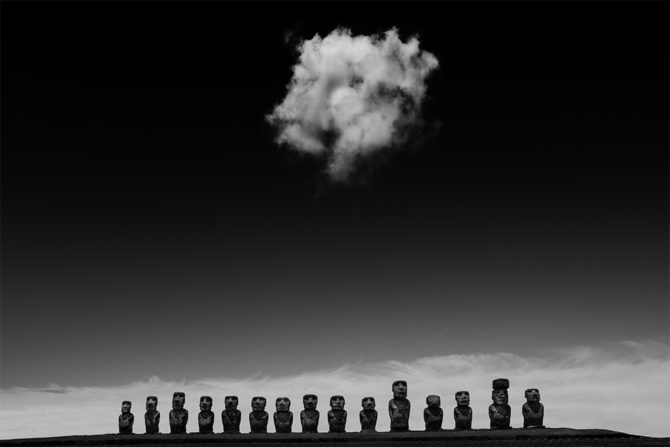Tag: harbinger
August 18, 2017
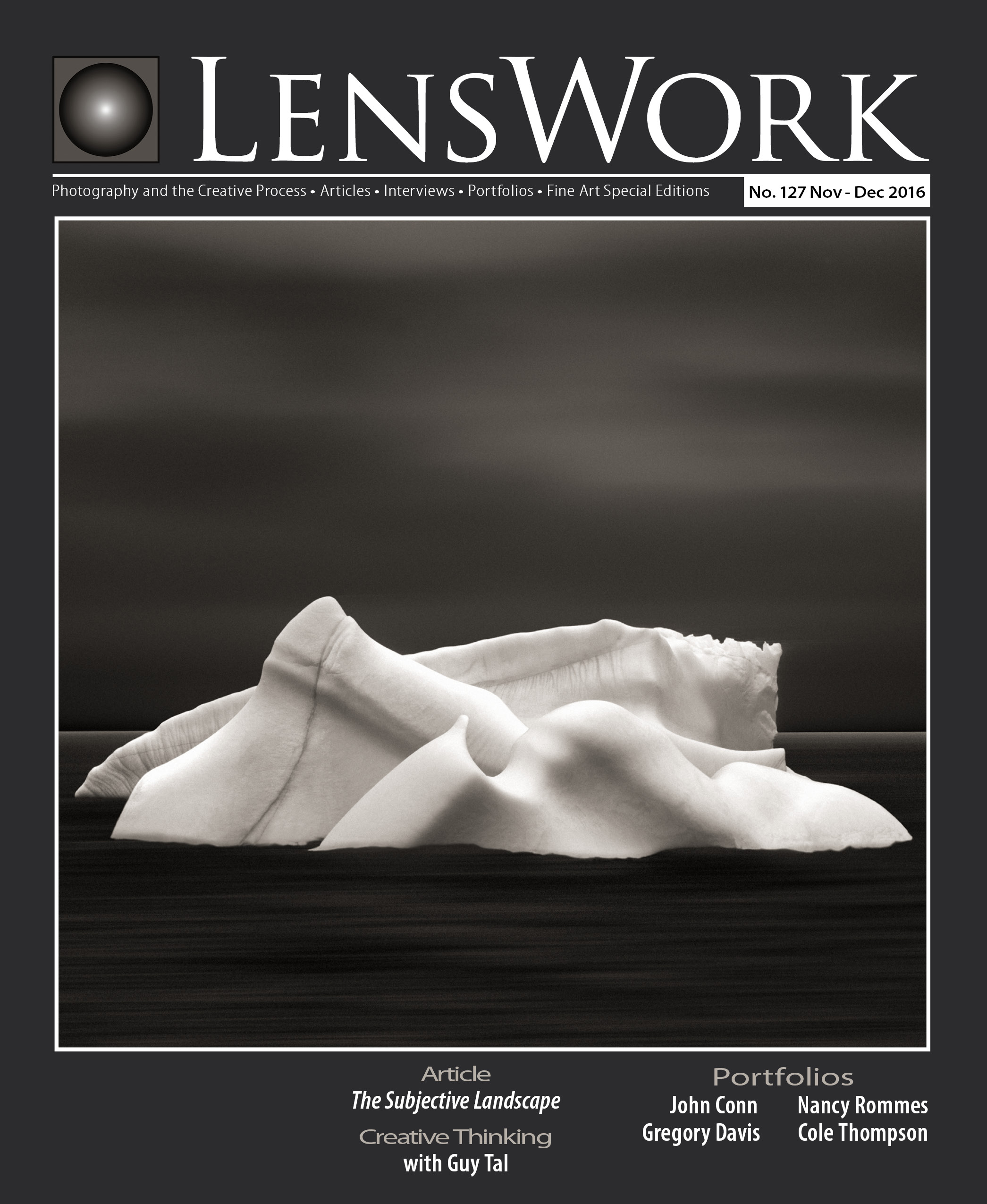
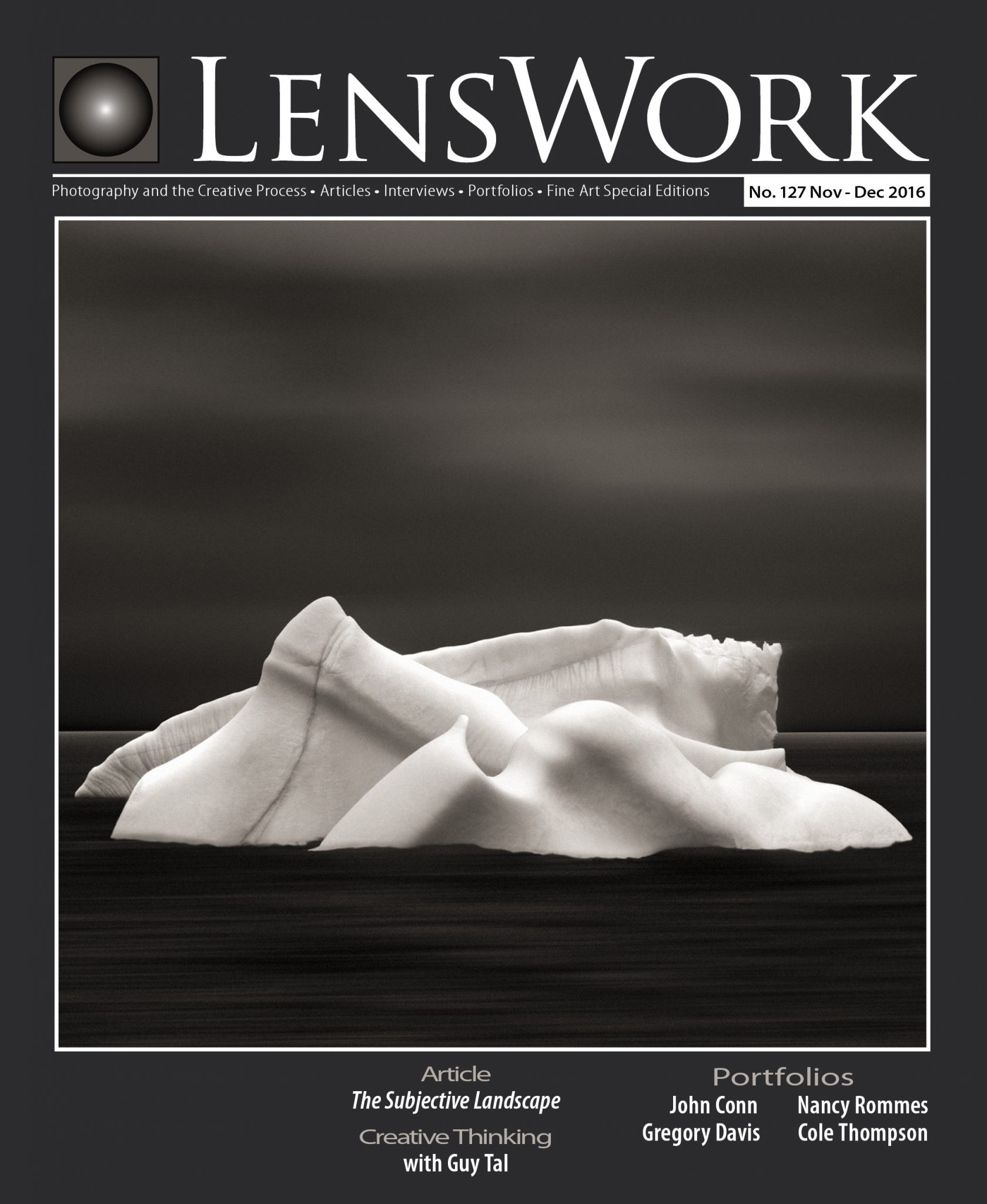
Are you familiar with LensWork? I suspect that most of you are, but if you are not…
I consider LensWork to be the world’s finest photography publication. Why? Because of the quality of the artists they publish and because of the quality of the printing, it is spectacular! The quality is better than most of the photo books I’ve seen and I think ofttimes better than the original images.
I’m not a print expert, but I do have a pretty extensive and varied print background: I worked in my own darkroom since 1968, learned digital printing in 2004 and I was an offset print buyer in the 1980’s and worked extensively with Gardner-Fulmer Lithograph (where I would run into Ansel Adams doing press checks).
My point is that I know good printing and LensWork has amazing printing. Ask anyone who has ever seen a copy.
To learn more about LensWork, you might start here: http://www.lenswork.com/lwq.htm
You can subscribe or you can pick up a copy in selected bookstores. However I should warn you that because LensWork is physically shorter than the other publications, it often gets lost in the crowd. So if you’re in a Barnes and Noble and you don’t see it, check behind the other Photo Magazines.
And if you do decide to subscribe, might I suggest that you do it before the October 2017 issue comes out? Consider this an omen of things to come…
Cole
P.S. Sometime I’d like to tell a couple of Ansel Adams stories, including how I came to have a print of “Aspens” hanging in my home.
January 29, 2015
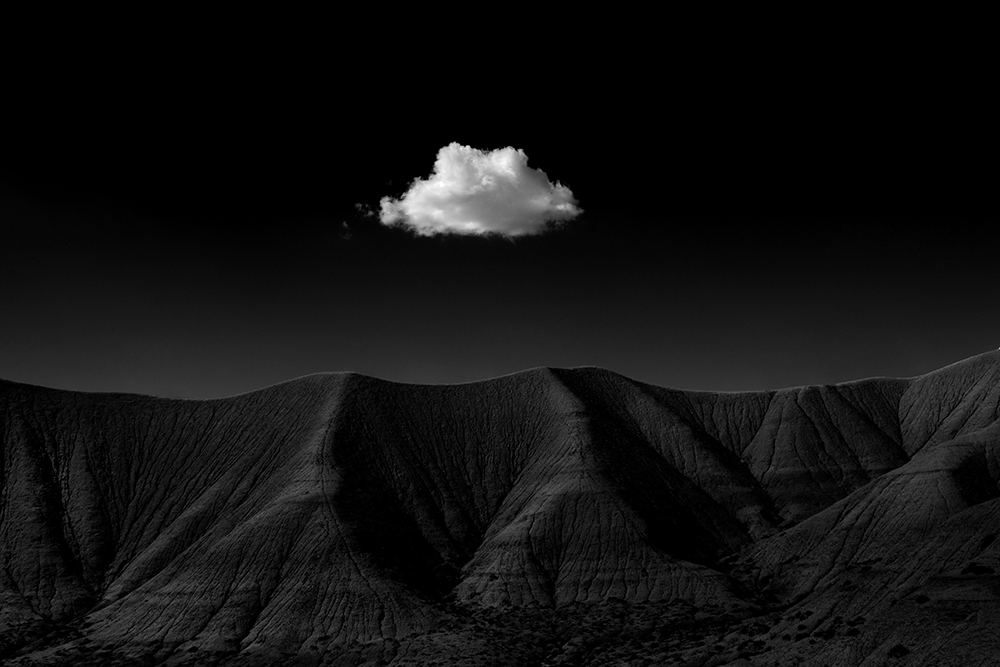
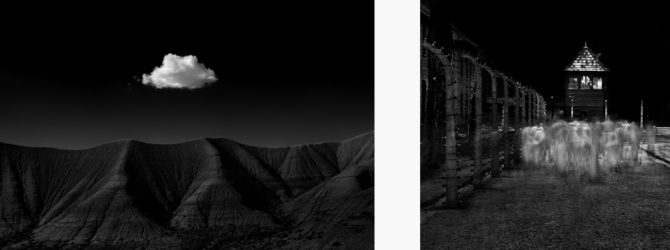
Harbinger Vs. Auschwitz
Last week I pointed out that my Harbinger image had almost 40 times more Flickr “favorites” than my Auschwitz image and I asked:
What do you think it means?
I heard a lot of great ideas and appreciated some new ones that I hadn’t thought of. And now I’d like to tell you what I think it means…
It means that more people like the Harbinger image.
What it doesn’t mean is that Harbinger is a “better” image. Popular does not mean better.
Who decides which images are good, bad, better or great? I do, but only for myself…and you do, but only for yourself. What I need to decide is:
Am I going to pursue popular or great?
Creating an image that is popular can be a fleeting pleasure. But when you create an image that you love, that’s a deep satisfaction that stays with you.
Here’s an image that I’ve just finished of the Moai at Tongariki.
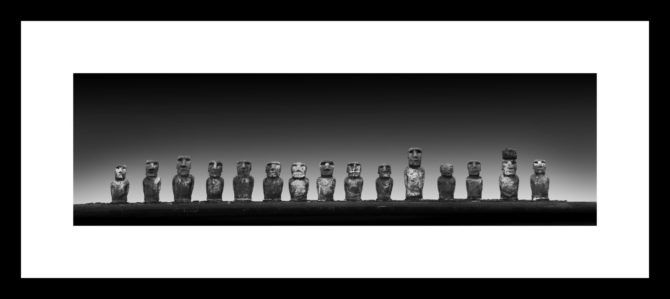
I love this image and so what other people think about it, is not important to me.
As I love to say: nobody is more of an expert than you when it comes to your Vision!
Cole
January 23, 2015
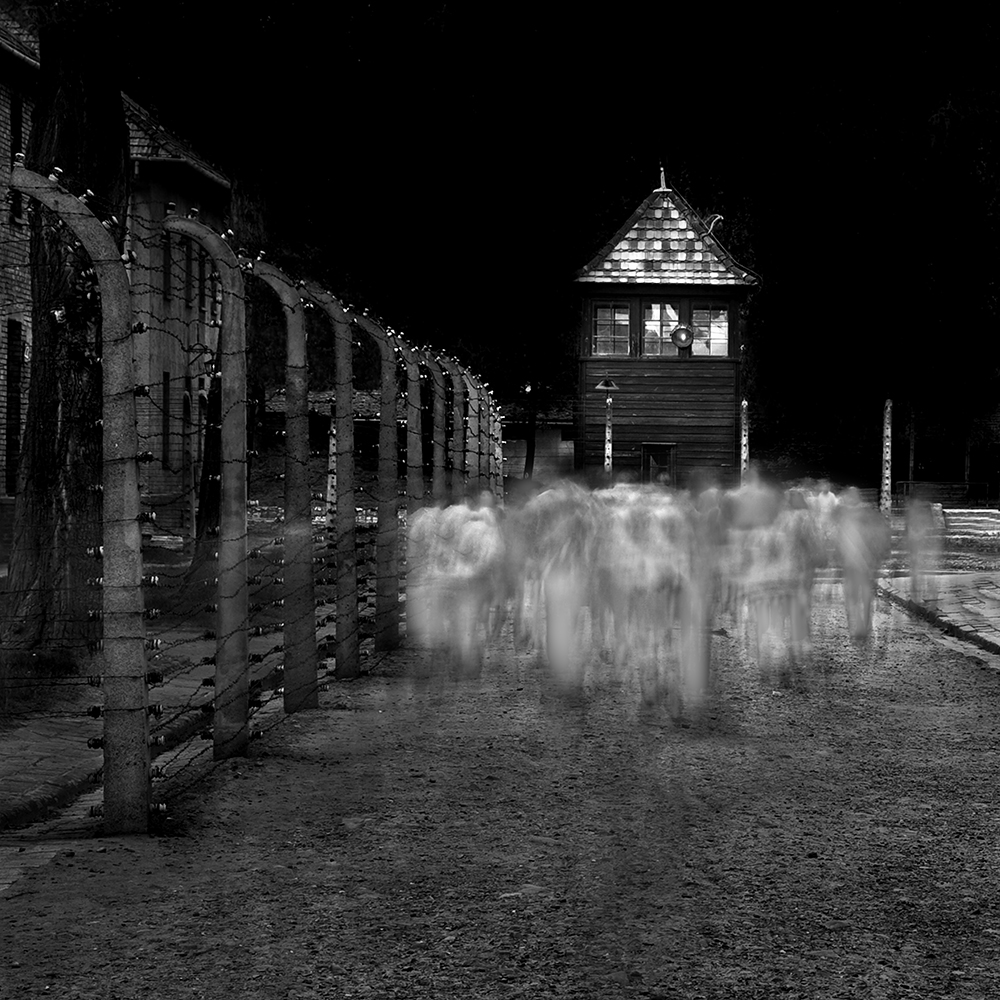
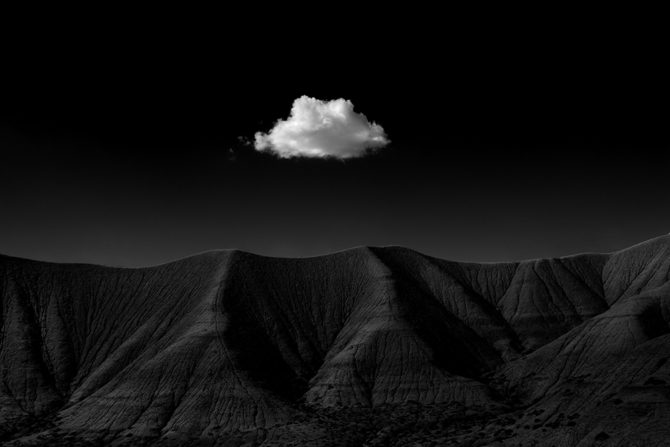
This is Harbinger No. 1 and it has 731 “favorites” on Flickr.
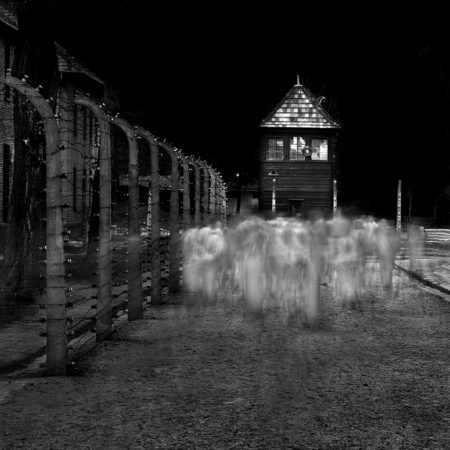
This is Auschwitz No. 14 and it has 20 “favorites.”
Harbinger has nearly 40 times more “favorites” than the Auschwitz image. Does this mean that it’s 40 times better?
What do you think it means?
Cole
January 16, 2015
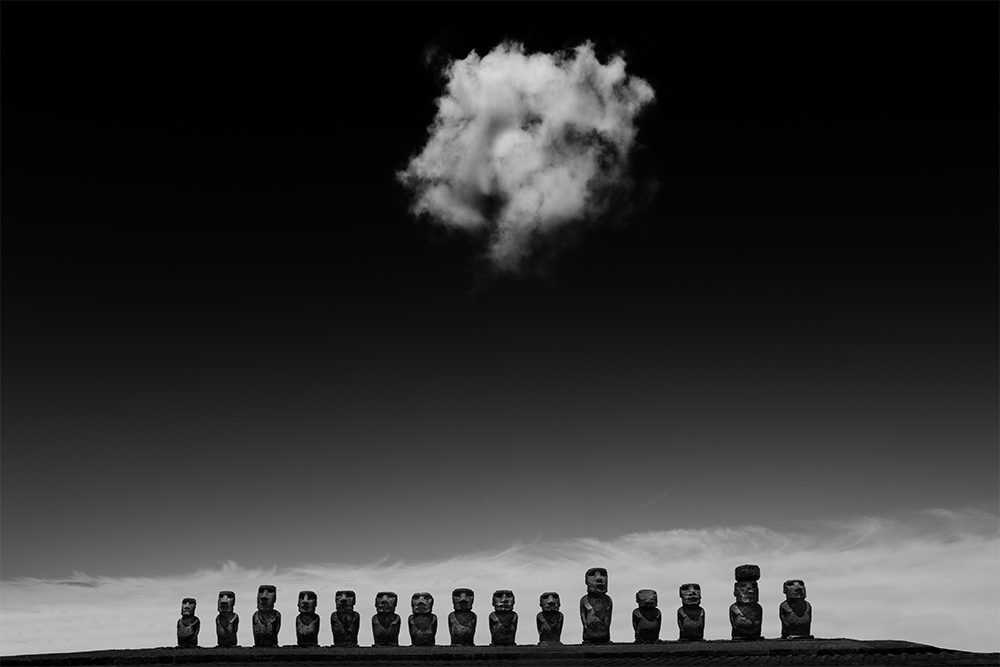
I’m back from Easter Island and have begun working on the several thousand images I shot. Many were very long exposures and that gave me lots of time to think, and one thought that I had was:
You shoot a lot, you hope a little and you’re grateful to get just one or two.And that’s the truth: I shot a lot of images and while I’m hoping for several good ones, I’ll be grateful to get just a few. It’s funny how when you’re viewing images in the field every one looks like a killer, but the reality is that the public will only see about 1 out of every 250 images that I shoot.
And while it’s important to create great images, it’s almost equally as important to only show the good ones!
~~~
I’ll be presenting my work to the Alpenglow Camera Club in Granby, Colorado on Wednesday, February 4th.
My presentation is entitled “Why Black and White?” and we will be meeting at the Granby Public Library at 7 pm.
If you’re in the area, I’d love to meet you!
Cole
June 28, 2014

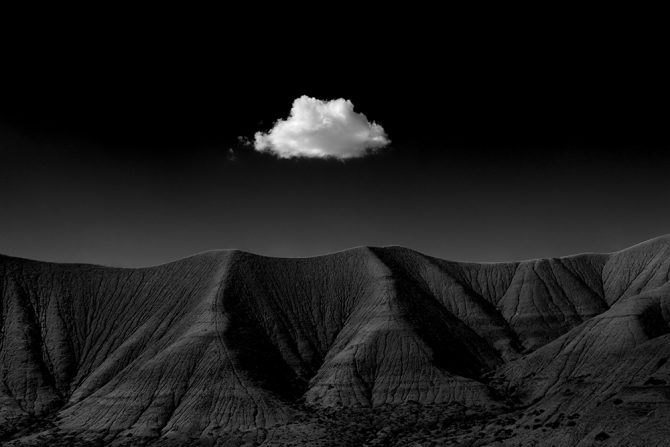
Harbinger No. 1
Several summers ago my son Jem and I were taking a road trip through the western states, it was meant to be both a photography trip as well as a father and son trip. We were in Utah and it was about 150 degrees (or so it felt) when I spied these great mud hills off to the north.
Sensing a good image, we hiked to a vantage point where I could photograph this set of wonderfully symmetric hills. I loved the dark mud and the deep blue sky, but the image was lacking something. I wanted to stay longer to see if I could solve this photographic riddle, but my son had other ideas.
Photographing with a child is a real challenge for me. I go into “working mode” which means that I withdraw into my own world and want to be left alone. My son on the other hand goes into “bored child mode” which means he repeats the following, interspersed with loud sighs:
It’s hot.
How much longer?
Can we go now?
You said 5 minutes…5 minutes ago!
Can I go back to the car and watch a movie?
Are you done?
Given the mediocrity of the image, the oppressive heat and my son chipping away at my stamina…I gave up, packed up and headed back to the truck.
But once back I spied this single cloud moving very fast across the horizon. I could see by its trajectory that in about a minute it would pass right over those mud hills that I had just been photographing.
This was a beautiful little cloud that was heading towards a wonderful setting…when suddenly I realized that this could be my “Moonrise, Hernandez” moment!
I told my son that I was going back for one more shot (he let out a loud and exaggerated groan) and I ran just as fast as I could. I quickly set up my gear and was able to get a single shot with the cloud perfectly situated above those mud hills. And that is the image above.
As I looked at the image on the camera’s screen, the name Harbinger immediately popped into my head and that is what I named the image.
When I would show this new image to people, they would ask “are you going to do a series of them?” I honestly didn’t think I’d ever find another solitary cloud like this one and would say that while I would love to, I doubted that it would be possible.
But over the next couple of years something interesting happened. Being sensitized to this concept, I started to find other Harbinger opportunities until I had a small collection of them:
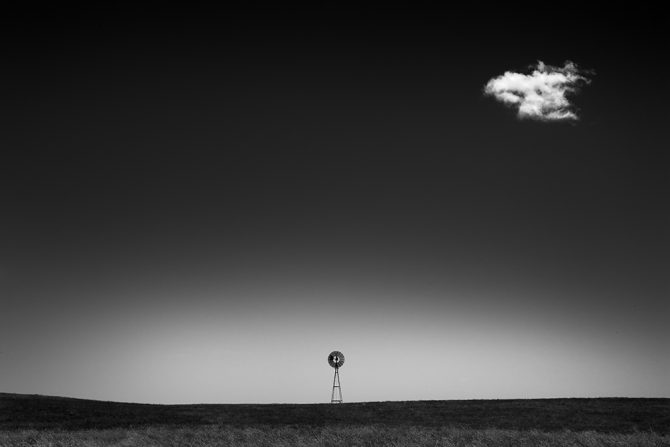
I love this series for its mysterious simplicity, and I love the artist statement for its brevity and ambiguity:
Harbinger: \?här-b?n-j?r\ noun
Unlike my Auschwitz-Birkenau series that took just under two hours to create, I expect Harbinger to take many years to complete.
But that’s okay, I’m in no hurry.
Cole
January 23, 2012
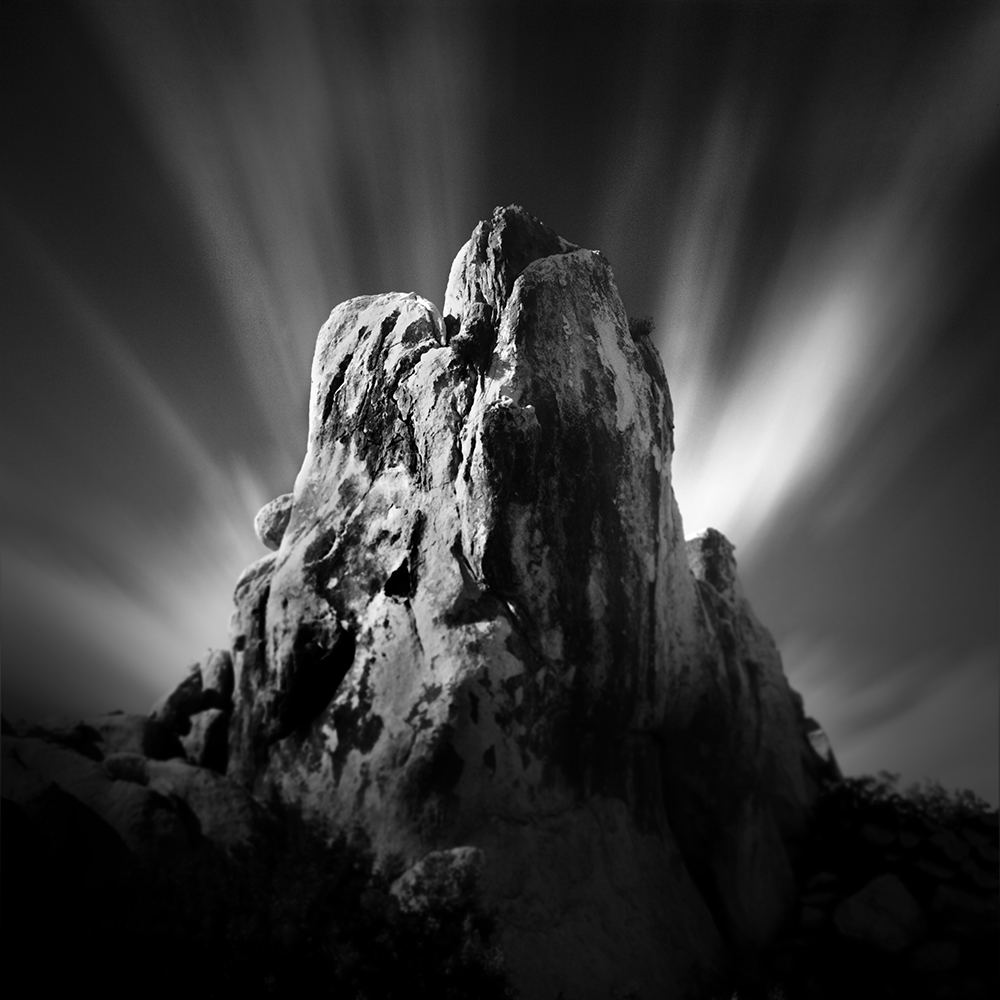

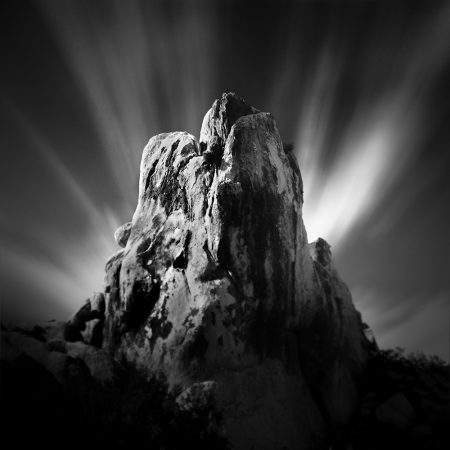
You just have to love Irony.
Yesterday my interview with Aline Smithson of LENSCRATCH was published and on the same day I created this image in Joshua Tree.
To understand the irony, read the interview and please do not say “this reminds me of an Ansel Adams photograph!”
http://www.lenscratch.com/2012/01/success-stories-cole-thompson.html
I’m still wandering in the desert and having a wonderful time with no cell or internet service. It’s been a great time of reflection and seeking out creativity, and I’m coming home with a real smorgasbord of images.
Back to seeing!
Cole
November 18, 2011
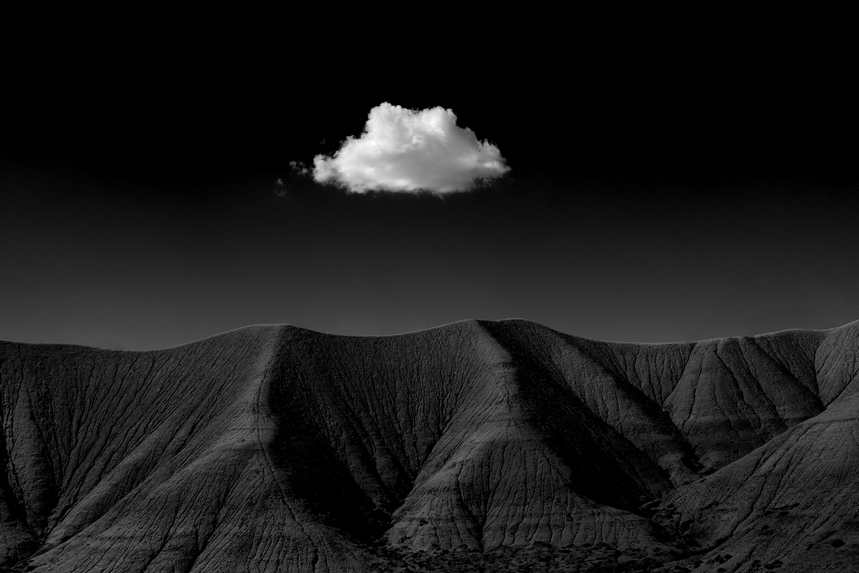

I’d like to tell you the story behind the image of Harbinger No. 1; how I came across it, how I created it and how it led to a ongoing portfolio.
My son Jem and I were traveling across Utah on a Father-and-Son road trip, it was summertime and it was 105 degrees in the Utah desert. Driving along I70 just across the border from Colorado we came upon these “mud hills” which caught my eye. They were so void of life that they made me think that this is what the moon must look like.
We stopped and I photographed for a while, but was unsatisfied. While the images were “interesting” they just didn’t feel complete and they certainly were not great. So we packed up and descended down the hill, eager to get back into the air conditioned truck.
But as were returning I saw this lone cloud moving very fast across the landscape. Based on its trajectory I knew that in just a minute it would be perfectly positioned over this dark symmetric hill that I had been photographing and would give my image the focal point that it needed. I ran up the hill as quickly as I could and hoped that I could get at least one shot, all the time thinking about the Ansel Adams story and how he rushed to get just one shot of Moonrise, Hernandez.
I quickly set up my tripod and camera, focused, adjusted my exposure and was lucky enough to get off two shots. I chose the above image of because it was centered above the hills and as many of you have noticed, I love centered and symmetric images. I was so fortunate to have this one perfectly shaped cloud come by and oblige me that day.
I like to name my images with the first word that comes to mind and this image immediately screamed “Harbinger” at me, and the dictionary’s definition became my artist statement:
Harbinger: \?här-b?n-j?r\ noun
1. one that goes ahead and makes known the approach of another; herald.
2. anything that foreshadows a future event; omen; sign.
People most often ask me about the processing of this image and I think that’s because many assume the key to a great image is in the processing. While there is no doubt that processing is important, it’s certainly no more important than the shot or your vision. If you focus on just the processing at the expense of vision or the shot, you may end up with a technically perfect but mediocre image. As an artist I try to focus on all three areas.
Vision
My vision for this image occurred at the moment I saw that cloud moving into position and I knew exactly how I wanted this image to look. It was going to be dark and that cloud was going to jump out at you! Sometimes that burst of vision can come later when I’m processing the image, but I don’t think it’s too important when the vision occurs as long as it does occur. Vision is what drives us to force the shot into compliance with our vision.
The Shot
When I composed this image I purposely centered the cloud and put the horizon in the center of the frame. Why? Because that’s just how the image felt to me. Next, I wanted a dark and graduated sky and so I used a polarizing filter which gave me both. On images i intend to be dark like this, I’ll often underexpose the image by 1 stop and then in processing I’ll dodge up the highlights.
Processing
When I converted this image to B&W I decreased the blue color channels to darken the sky, but I couldn’t go as far as I wanted because too much noise was being introduced. So to further darken the sky I burned it down with a very large and soft edged brush that was set at 1%. I work slowly to darken the sky to a pure black at the top and a very light gray at the hill’s edge. I dodged the cloud up so that it had a true white, but I was careful not to overdo it and lose highlight detail. This black sky and almost white cloud created this wonderful contrast that I love.
Next I burned the hills down so that visually they did not compete with the cloud for attention. And lastly I dodged up the very small edge of the ridge line to separate the hills from the sky. The final result is a dark image with a very bright subject, which is my preferred style.
When I created this first Harbinger image I really hoped that I could create an entire portfolio of similar images, but I never dreamed that I’d be lucky enough to find other such opportunities. I thought, how often will I see a single cloud over an interesting setting like this? But strangely enough I have found a few more and slowly my Harbinger portfolio is growing. Click here to see the entire portfolio.
Like all of my portfolios, this idea occurred spontaneously. I find that it’s easy to be creative when you are excited about a concept that inspires you!
Cole
September 16, 2009
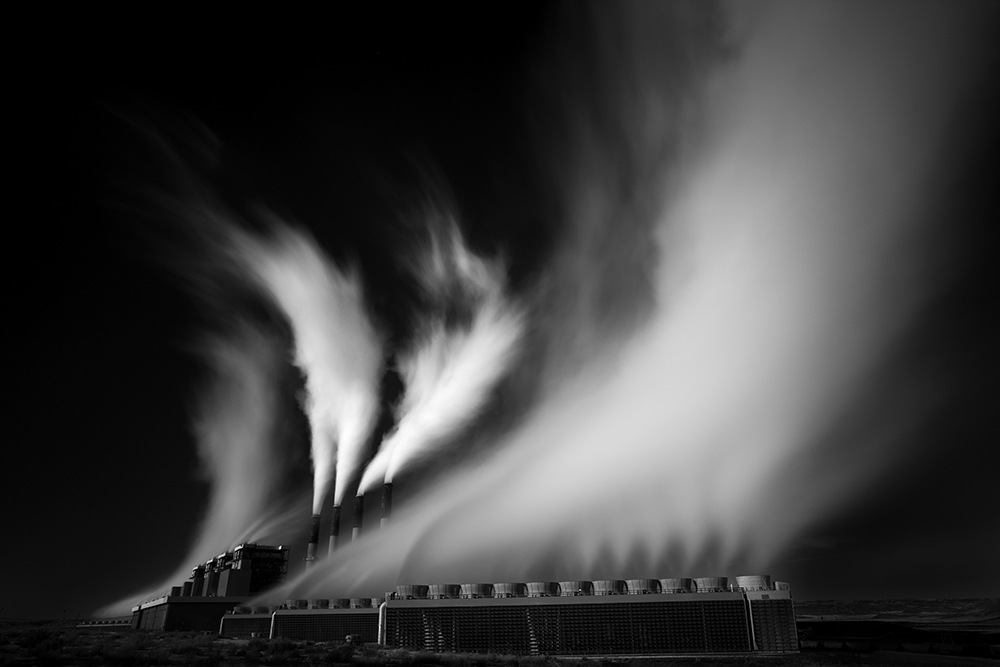

Have you heard about the many tools designed to give you great black and white images? There are special b&w conversion programs, plugins to make your images look like a specific type of b&w film, monochrome ink sets, custom print profiles, hi-tech monitor calibrators and more.
Are all of these necessary to produce a great print? I don’t know, but I don’t use them. My philosophy is “keep it simple” and for me, these tools are just expensive distractions that might make a 2% difference in the look of my image, but it takes the focus off of the 98%, the things that really matter.
Here are the secret tools and techniques that I use to create a great b&w image:
1. Start with the right shot. Certain images tend to lend themselves to b&w more than others and I look for subjects with great blacks and contrast opportunities.
2. Shoot in RAW and B&W mode. This will allow you to see the image on the camera display in b&w (making visualization easier) but the RAW image will still be in color, allowing you to convert it how you like.
3. Do as much in the RAW conversion process as possible.
4. Convert to b&w in Photoshop using the B&W Conversion tool (never desaturate or simply remove the color). Play with the color sliders to see how each will change the image and produce better contrasts. These sliders are like adding color filters to the lens, but after the fact and can make a dramatic difference in the image.
5. Don’t overuse the global controls. I try to avoid them whenever possible because they apply the effect to the entire image instead of selectively. I use dodging and burning as my primary tool, which allows me to change the image just where it is needed.
6. When dodging and burning, work slowly! I typically set the dodge/burn tool exposure to 1-3% and hardness to 0. Then I work very very slowly and let the effect build.
7. Use a pen and tablet to dodge and burn. The pen gives you precise control and the tablet is pressure sensitive. A mouse cannot do a good job of dodging and burning like a pen and tablet can. And purchase the largest tablet you can afford, once you learn how to use it, you will become addicted and it will become your primary processing tool.
8. Use a decent printer. Like cameras, there are many good printers but I love the Epson series with their wonderful K3 inks, and the included “b&w print mode” gives fantastic results.
9. Use a good paper, but be careful not to get caught up in the search for the “perfect paper.” I have friends who have been searching for years and the truth is that there are many wonderful papers out there that will server you well. I personally use Hahnemuhle Photo Rag 308 and Epson Exhibition Fiber.
~
Let me oversimplify and summarize it this way; I produce my prints with a copy of Photoshop l, a pen and tablet and an Epson printer, and that’s about it. You don’t need complicated or expensive extras to create stunning black and white prints.
Now I’m not saying those extras cannot improve your prints, I’m just suggesting that the time to experiment with the extras is after you’ve produced the best print you can with the basic tools and can go no further. Until then, that 2% extra improvement will just be an expensive distraction.
This is just my opinion of course, and there are many who might disagree, but I’ll let my images speak for themselves.
Cole
June 12, 2009
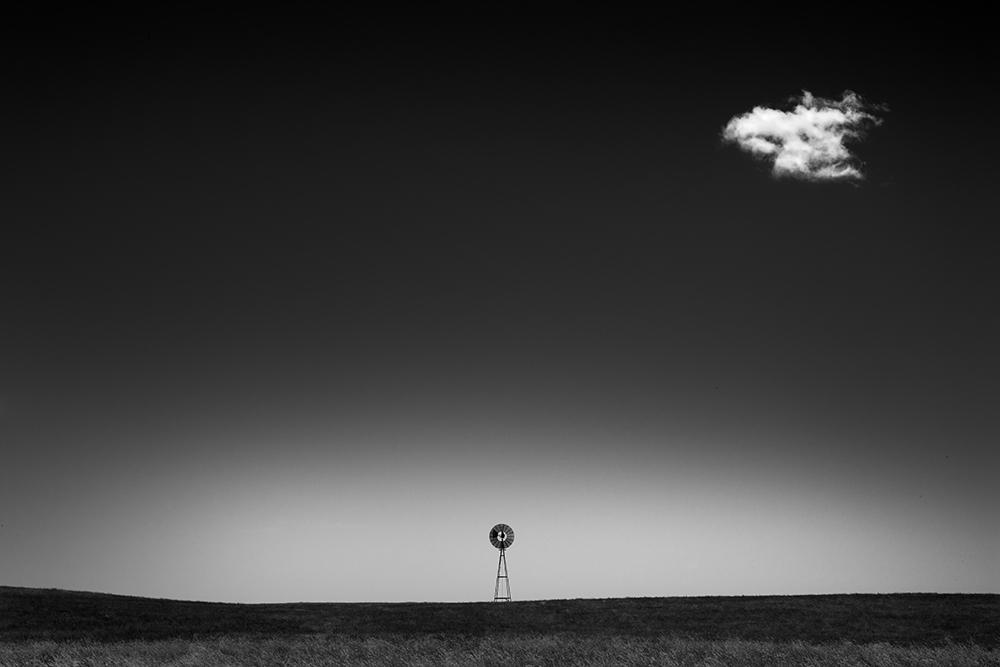

When I created my first Harbinger image, I broke the “centering” rule.
When I created the next and the next and the next, I centered them also. It just felt right.
But about a week ago I created the new image above, and decided not to center the cloud.
The definition of “harbinger” is:
\?här-b?n-j?r\ noun
That is exactly what I see when I create each Harbinger image, a foreshadowing of future events.

